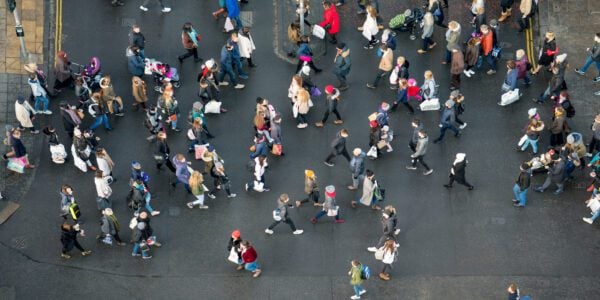-
Professor Lorraine DeardenInstitute for Fiscal Studies
-
Alissa GoodmanInstitute for Fiscal Studies
-
Emla FitzsimonsInstitute for Fiscal Studies
-
Greg KaplanInstitute for Fiscal Studies
Project overview
We funded The Institute for Fiscal Studies (IFS) to examine different models for Higher Education funding.
The IFS team used an innovative technique, Copula Functions, together with data from the British Household Panel Survey and Labour Force Survey to look at different models for funding Higher Education. The initial research took place in 2004 to 05.
In 2010, the IFS updated the lifetime earnings projections from the study and published a report, ‘Future Arrangements for Funding Higher Education’, funded by the Foundation. The new evidence was submitted to the Browne Review of Higher Education Funding and Student Finance.
The current system
- For every £1 loaned by the government to students to cover maintenance and fees, our simulations suggest that the taxpayer contributes 23p, or around £4,800 per graduate.
Charging a positive real interest rate on loans
- If the government were to charge an interest rate on loans equal to the government’s cost of borrowing (2.2%), this would save the taxpayer money. On average, the subsidy would fall from 23p per £1 loaned, to 10p per £1 loaned. The remaining subsidy would arise because all student debts are written off after 25 years.
- Under our simulations, the break-even interest rate – i.e. the rate the government would have to charge in order to have a zero-cost system – is around 3.45%. Interest rates higher than this would, assuming graduates did not change their repayment behaviour, be profitable to the exchequer.
Raising the fee cap
- If the government were to raise the fee cap – and provide a fee loan for the same amount – this would cost the taxpayer money. This occurs mainly because an increasing number of graduates will reach the 25-year threshold without having paid off the full value of their loan. For example, if the average tuition fee rose to £5,000 from the current £3,200 fee cap (at 2011 prices), the average loan subsidy would increase from £4,800 per graduate to £6,900 per graduate.
- This cost could be reduced by increasing interest rates in conjunction with increasing fees; for example, charging an interest rate of 2.2% would result in the subsidy falling to £3,600. But the interest rate required for the loan system to be revenue-neutral rises steeply with the level of the fee.
Changing parameters of the loan system
- Other parameters of the loan system can also be adjusted to achieve the same subsidy as the current system or a lower one, with or without increasing interest rates and/or fees. For example, changes can be made to the repayment rate, the number of years after which debt is written off and/or the threshold at which people start repaying. There are many combinations that the government could use to alter its costs.
- More regressive ways of raising revenue include increasing the repayment rate, lowering the repayment threshold and/or increasing the debt write-off period beyond 25 years. More progressive ways include increasing the interest rate in conjunction with lowering the loan repayment rate, and/or making graduates pay for a further period of time after they have paid off the full balance of their loans.
- For example, under the current £3,200 fee cap, a zero-subsidy system could be achieved by imposing a 5% real interest rate and a 5.8% repayment rate, and this would give the biggest taxpayer subsidy to the lowest graduate earners.
- Alternatively, the government could choose to introduce new features to the current system in order to save money. One such example is to offer students a discount for up-front payment of fees or early repayment of their loans. In order for such a system to be profitable for the exchequer, however, graduates who would actually lose out financially by taking up the discount would need to be induced to do so.
- Many of the reforms considered in this report involve increasing graduate contributions to the cost of going to university. This could result in important behavioural change consequences. These could take the form of graduates making overpayments to reduce their debt or students declining to take up loans, or indeed deciding not to participate in university at all. Although such changes are difficult to quantify in advance, it is essential that policymakers are aware of these possible responses when they consider different reforms.





















































